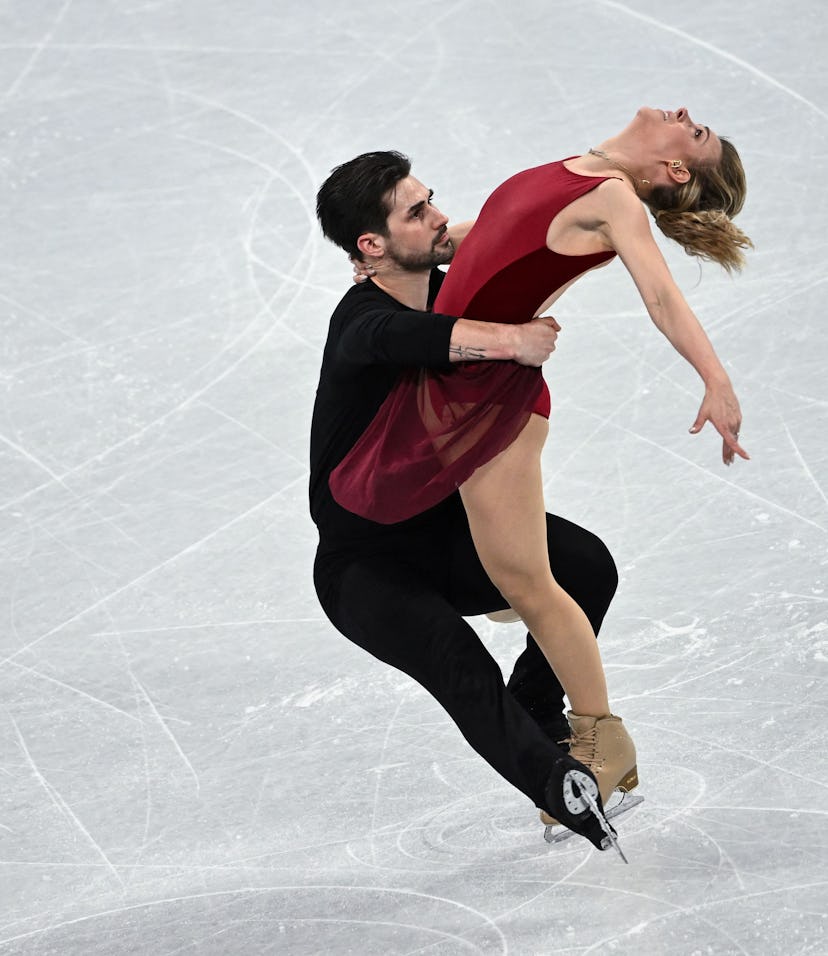
Here’s What Makes An Ice Dance Performance Medal-Worthy
Make sure to spot the twizzles!
The 2022 Winter Olympics kicked off Feb. 4, and the figure skating competition is well underway. With so many different types of skating in the sport, it can be difficult to understand what’s going on during the competitions. Of course, ice dancing falls under the category of figure skating, but it has some key differences, including more ballroom dance-like moves while on ice. If you’re wondering how ice dancing is scored, here’s a look at the judging process.
ICYDK, ice dancing and figure skating may appear similar, but there are a few differences that distinguish the two. After all, figure skating has more of an emphasis on jumps, lifts, and spins, while ice dancing is more similar to ballroom dancing on ice. Ice dancers are expected to be no more than two arms’ lengths apart, and the routine should include the following key moves: twizzle (a complex moving turn on one foot), a pattern dance, lift, spin, step sequence, and myriad choreographic elements.
Since they’re more focused on dancing, ice dancers also use different music than figure skating — typically a tune with a steady beat or rhythm to accompany their dance moves. Given the differences between the two sports, ice dancers are judged more on grace rather than technicality (though it’s also taken into account).
Like figure skating, ice dancing is scored using the ISU Judging System, which combines both the technical element score (TES) and the program component score (PCS) to determine a final score. The TES is based on how technical elements — such as jumps and spins — are executed as well as their difficulty, while the PCS is focused on artistry, including presentation and interpretation (such as how well the choreography and music go together).
In ice dance, the short (rhythm) program runs between 2 minutes and 50 seconds and 3 minutes, and the long (free) program lasts between 3 minutes and 50 seconds to 4 minutes and 10 seconds. The scores from the rhythm dance and free dance are added together to determine overall placement.
According to the official Beijing 2022 Olympics website, competitors in an ice dance team event advance to the finals based on the “progression rule,” which states that the “top five teams at the end of the qualification phase qualify to the final.” That means only the five teams with the highest qualification routine scores will be able to compete in the final round for an Olympic medal.
To give you a picture of how the progression rule works, the top five ice dance teams in the rhythm dance category to advance to finals on Feb. 4 during the Beijing 2022 Olympics — United States, Russian Olympic Committee, Italy, Canada, and China — had scores ranging from 74.66 to 86.56. The Feb. 7 free dance results of the top five pairs — United States, Russian Olympic Committee, Canada, China, and Japan — had scores ranging from 98.66 to 129.07.
Now that you’re brushed up on the basics of ice dancing, you can look out for twizzles and more during the 2022 Winter Olympics.